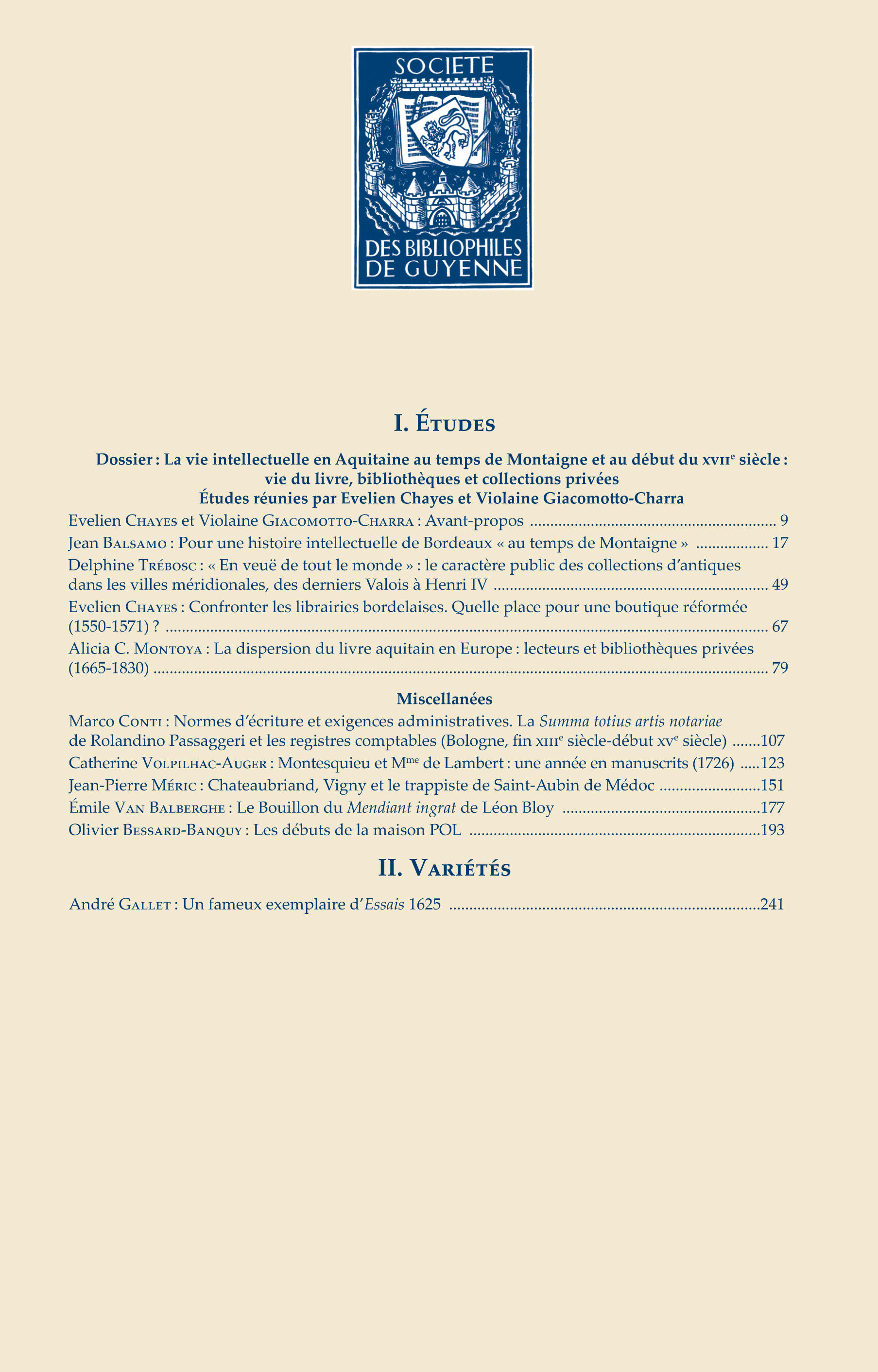Chateaubriand, Vigny et le trappiste de Saint-Aubin de Médoc
Abstract
Known only to a selected number of people from Bordeaux interested in provincial history, the very short existence of the small Cistercian monastery Saint-Aubin-de-Médoc (1821-1830), near Bordeaux, nonetheless convenes the names of two important French writers. In his Génie du Christianisme (1803) Chateaubriand conveys the obscure destiny of his one and only father-abbot dom Jean-Baptiste de Martres. This French emigrated priest, who became a Trappist monk in Spain in 1798, encounters Alfred de Vigny in Paris almost twenty years later, in 1822. The priest tries to collect money in order to assure the future of his Bordeaux establishment; the poet invites him to tell him about a friar who was a Spanish converso he knew about fifteen years earlier, Antonio Marañón, called Le Trappiste. Thus, thanks to Chateaubriand through the hidden sanctity of friar Jean Climaque, and thanks to Vigny through the extravagant character of friar Antonio, the poor wandering monk, who was an accidental Bordelais, comes to bestow on his abbey situated at the gates of the Medoc a form of notoriousness that would not save him from oblivion… but is nonetheless worth to be remembered.
How to Cite
More Citation Formats
Issue

